Hidden Gem Towns in the Pacific Northwest USA
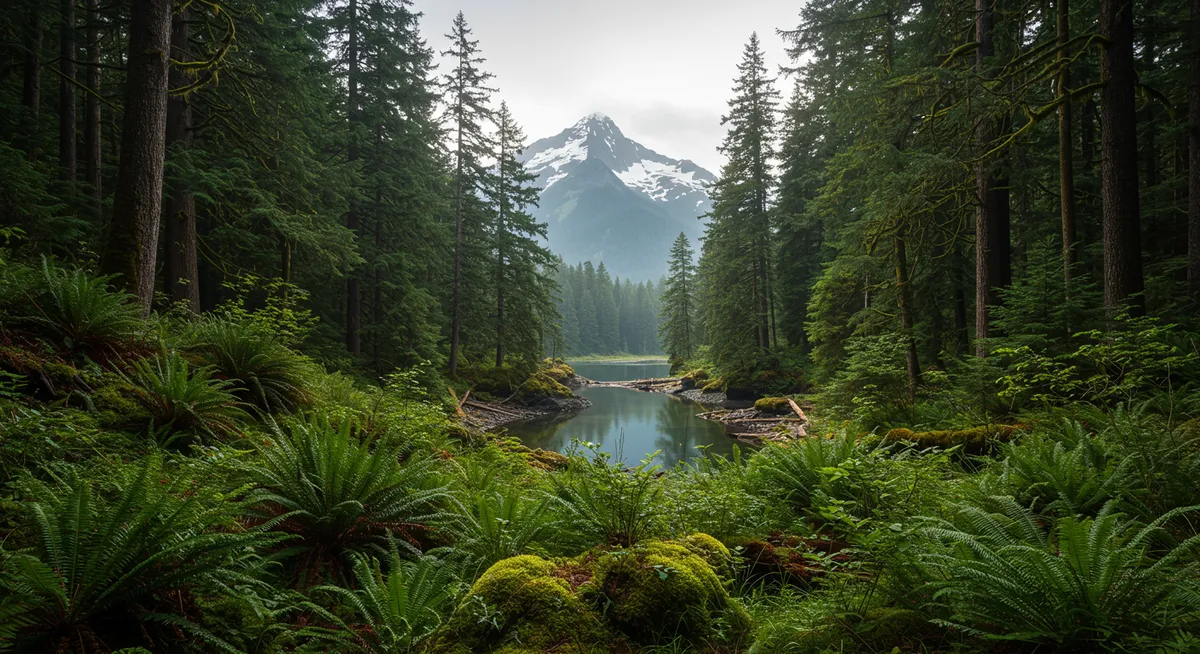
Hidden Gem Towns in the Pacific Northwest USA
Between the misty coastlines, ancient forests, and snow-capped volcanic peaks of the Pacific Northwest lie some of America's most charming yet overlooked small towns. While Seattle and Portland draw millions of visitors annually, savvy travelers venture beyond these urban centers to discover communities that embody the region's distinctive blend of natural splendor, progressive values, artistic spirit, and pioneering history. From Victorian seaports to mountain artist havens, this guide unveils the Pacific Northwest's most enchanting hidden gem towns where authentic experiences await amid some of the country's most breathtaking landscapes.
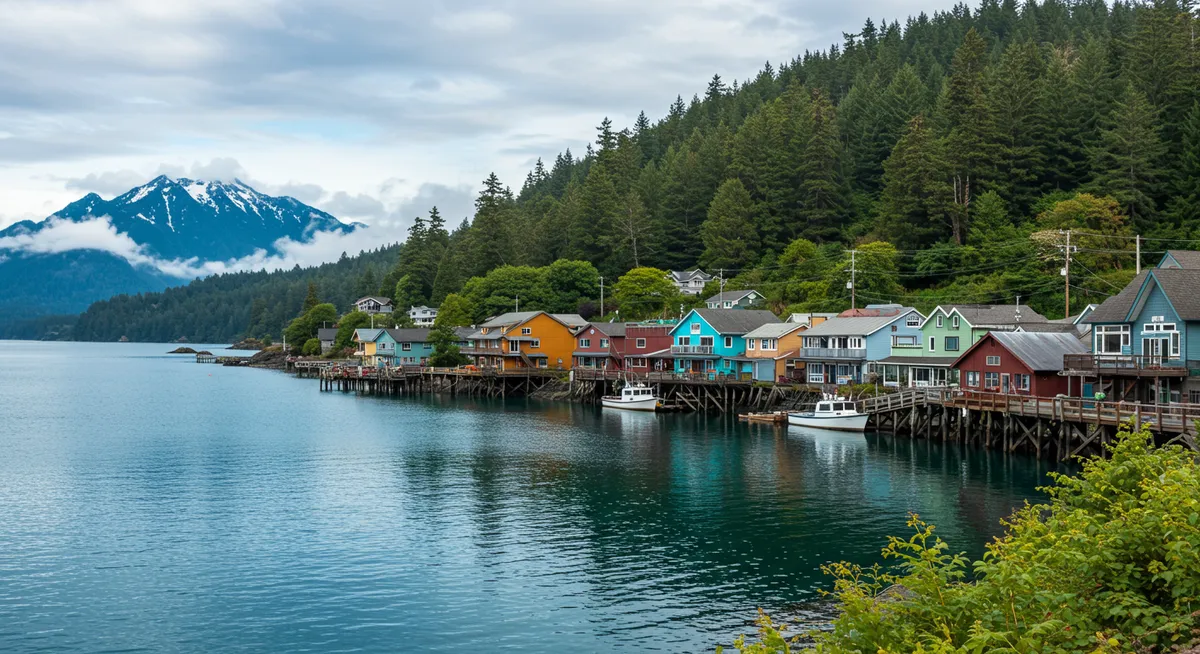
1. Port Townsend, Washington: Victorian Seaport
Perched at the northeastern tip of Washington's Olympic Peninsula, Port Townsend presents one of the Pacific Northwest's most perfectly preserved Victorian seaports. Once poised to become one of the region's largest harbors before the railroad bypassed it in the 1890s, the city's economic downturn became its preservation blessing. Today, its downtown and uptown historic districts showcase a remarkable collection of 19th-century architecture, while its stunning natural setting between Puget Sound and the Olympic Mountains creates a backdrop of extraordinary beauty.
What Makes It Special
- Victorian Architecture: One of only three Victorian Seaports on the National Register of Historic Places
- Maritime Heritage: Working waterfront with traditional wooden boat building and annual Wooden Boat Festival
- Artistic Community: Home to numerous artists, writers, and craftspeople with galleries throughout town
- Fort Worden: Former military base transformed into a 434-acre state park with beaches, bunkers, and cultural facilities
Local Experiences
Explore the historic downtown and uptown districts, admiring the ornate Victorian buildings that house independent shops, bookstores, and restaurants. Visit Centrum at Fort Worden, a thriving arts organization that hosts renowned jazz, blues, and fiddle workshops and festivals throughout the year. Shop at the Port Townsend Farmers Market (Saturday mornings, April through December) for local produce, crafts, and prepared foods. Take a whale-watching tour from the marina, with opportunities to see orcas, gray whales, and humpbacks depending on the season.
Getting There
Port Townsend is located on the Olympic Peninsula, about 56 miles (90 km) northwest of Seattle. It's reached via Highway 20 and the Coupeville-Port Townsend ferry if coming from the Seattle area. The town center is compact and walkable, with most attractions within a mile of each other.

2. Joseph, Oregon: Alpine Art Haven
Nestled at the foot of the spectacular Wallowa Mountains—often called "Oregon's Alps"—Joseph represents one of the most dramatic transformations in the Pacific Northwest. Once primarily a ranching and timber town, this remote community reinvented itself as an arts destination when the local bronze foundry began attracting sculptors from around the world. Today, Joseph combines authentic Western heritage with sophisticated arts and culture against a backdrop of snow-capped peaks, crystalline lakes, and alpine meadows.
What Makes It Special
- Bronze Sculpture Capital: Streets lined with public art cast at the local foundry
- Wallowa Mountains Setting: Dramatic alpine scenery often compared to Switzerland
- Native American Heritage: Deep connections to the Nez Perce tribe and Chief Joseph, the town's namesake
- Wallowa Lake: Pristine glacier-carved lake at the edge of town, surrounded by moraines
Local Experiences
Take a self-guided walking tour of Joseph's Main Street to view the impressive collection of bronze sculptures that tell the story of the area's Native American heritage and pioneer history. Visit local studios and galleries showcasing the work of artists drawn to the area's extraordinary natural beauty. Ride the Wallowa Lake Tramway, one of the steepest in North America, ascending 3,700 feet to the summit of Mt. Howard for panoramic views of the Eagle Cap Wilderness. Explore Wallowa Lake State Park, offering swimming, boating, and hiking with dramatic mountain views.
Getting There
Joseph is located in northeastern Oregon, about 330 miles (530 km) east of Portland. It's best reached by car via Interstate 84 and OR-82. The remote location contributes to its unspoiled character, though it means a significant drive from major cities.
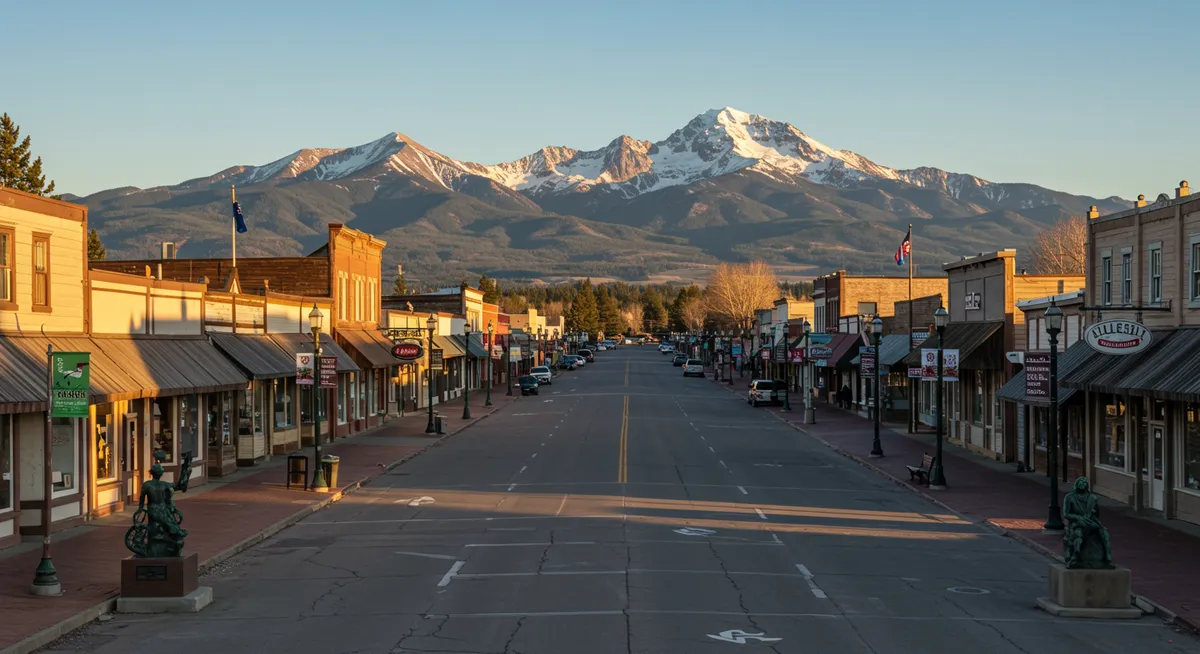
3. Sequim, Washington: Lavender Capital
Located in the rainshadow of the Olympic Mountains, Sequim (pronounced "skwim") receives just 16 inches of annual rainfall—a stark contrast to the typical Pacific Northwest climate. This unique microclimate creates ideal conditions for growing lavender, transforming the surrounding valley into a purple paradise each summer. Beyond its fragrant fields, Sequim offers access to extraordinary natural diversity, from the Dungeness Spit—the longest natural sand spit in the United States—to the temperate rainforests of the nearby Olympics.
What Makes It Special
- "Blue Hole" Microclimate: Unusually sunny and dry conditions in the otherwise rainy Pacific Northwest
- Lavender Farms: Over a dozen farms producing world-class lavender products
- Dungeness Spit: 5.5-mile natural sand spit with historic lighthouse at its tip
- Irrigation Heritage: Pioneering water management systems dating back to the 1890s that transformed the region
Local Experiences
Visit during the Sequim Lavender Festival (mid-July) when farms open their gates for tours, demonstrations, and u-pick opportunities amid peak bloom. Hike the Dungeness Spit to the New Dungeness Lighthouse, an 11-mile round-trip walk along one of North America's most distinctive coastal features. Shop at local farm stands and markets for Dungeness crab (named after the local bay), organic produce, and artisanal lavender products. Explore the Olympic Discovery Trail, a multi-use path that will eventually span 130 miles from Port Townsend to the Pacific Ocean.
Getting There
Sequim is located on Washington's Olympic Peninsula, about 68 miles (109 km) northwest of Seattle. It's accessible by car via Highway 101, with the Kingston-Edmonds ferry providing a scenic route from the Seattle area.
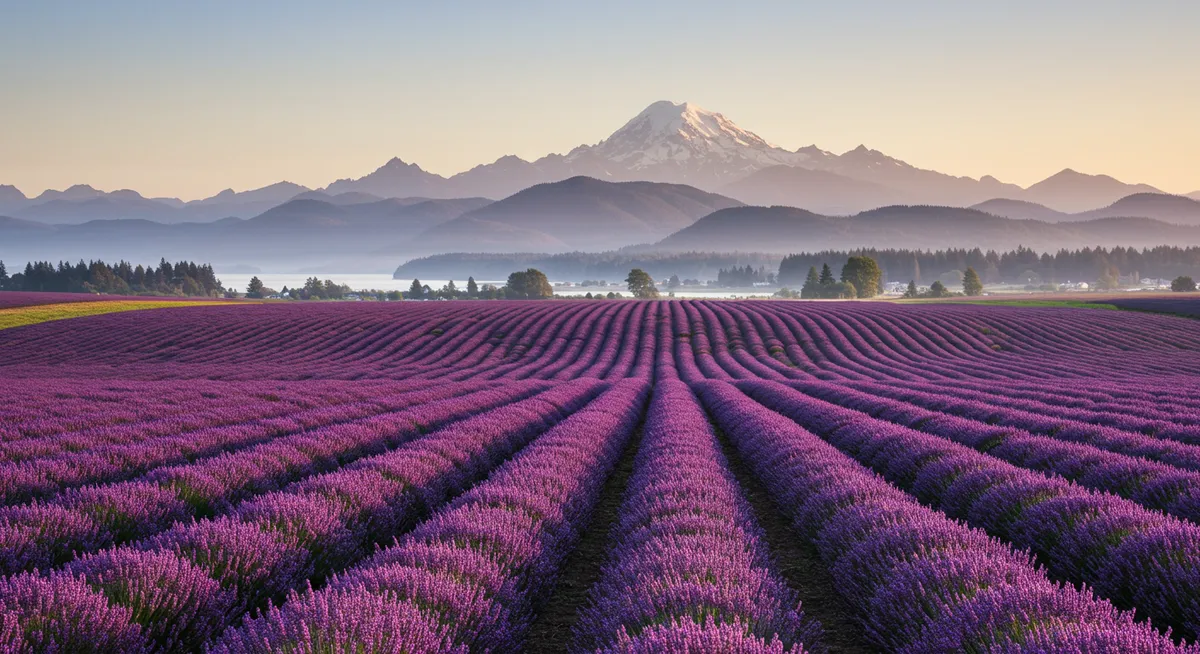
4. Astoria, Oregon: Historic Port City
Perched on a peninsula where the Columbia River meets the Pacific Ocean, Astoria stands as the oldest American settlement west of the Rockies. Founded in 1811 as a fur trading outpost, this hillside city blends gritty maritime heritage with Victorian elegance and contemporary arts. While some may recognize Astoria as the filming location for movies like "The Goonies" and "Kindergarten Cop," those who venture beyond the tourist sites discover a working port city with authentic character, spectacular river views, and a thriving creative scene.
What Makes It Special
- Rich History: Over 200 years of diverse cultural influences from Native American to Scandinavian
- Victorian Architecture: Hillside streets lined with colorful homes and historic mansions
- Working Waterfront: Active fishing port where massive ships navigate the Columbia River
- Cultural Resurgence: Former cannery buildings transformed into breweries, cafes, and museums
Local Experiences
Climb the 164-step spiral staircase of the Astoria Column for panoramic views of the Columbia River, Pacific Ocean, and surrounding mountains. Visit the Columbia River Maritime Museum to learn about the treacherous Columbia Bar, known as the "Graveyard of the Pacific" for its challenging conditions. Ride the historic Astoria Riverfront Trolley along the waterfront, passing sea lion docks, breweries, and repurposed cannery buildings. Sample local seafood and craft beer at one of the city's excellent brewpubs, many housed in restored historic buildings.
Getting There
Astoria is located in northwestern Oregon, about 95 miles (153 km) northwest of Portland. It's accessible by car via Highway 30 or Highway 101. The compact downtown is walkable, though a car is helpful for exploring the hillside neighborhoods and surrounding attractions.

5. Leavenworth, Washington: Bavarian Village
Nestled in the eastern foothills of the Cascade Mountains, Leavenworth presents one of the Pacific Northwest's most distinctive transformations. Facing economic decline in the 1960s after the railroad relocated, this former timber town reinvented itself with a comprehensive Bavarian-themed makeover. While the concept might sound kitschy, the execution is remarkably authentic, with Alpine architecture seamlessly set against the mountain backdrop. Beyond the German-inspired facade lies genuine outdoor adventure, with the Wenatchee River, Cascade Mountains, and surrounding orchards offering year-round recreation.
What Makes It Special
- Authentic Bavarian Architecture: Complete German-inspired village design with Alpine details
- Mountain Setting: Surrounded by the dramatic peaks of the Cascade Range
- Outdoor Recreation Hub: Gateway to hiking, climbing, skiing, and river sports
- Festival Tradition: Year-round celebrations including one of the largest Oktoberfests outside Germany
Local Experiences
Visit during the Christmas Lighting Festival (December weekends) when the entire town transforms into a winter wonderland with over half a million lights. Sample authentic German cuisine and locally brewed beer at traditional restaurants and beer gardens throughout town. Attend the Leavenworth Summer Theater, which stages outdoor productions with the mountains as a natural backdrop. Explore nearby Enchantment Lakes in the Alpine Lakes Wilderness, one of Washington's most spectacular high-country destinations (permit required).
Getting There
Leavenworth is located in central Washington, about 120 miles (193 km) east of Seattle. It's accessible by car via Highway 2, which crosses the Cascade Mountains through scenic Stevens Pass. The village center is compact and designed for pedestrians, with most attractions within walking distance.
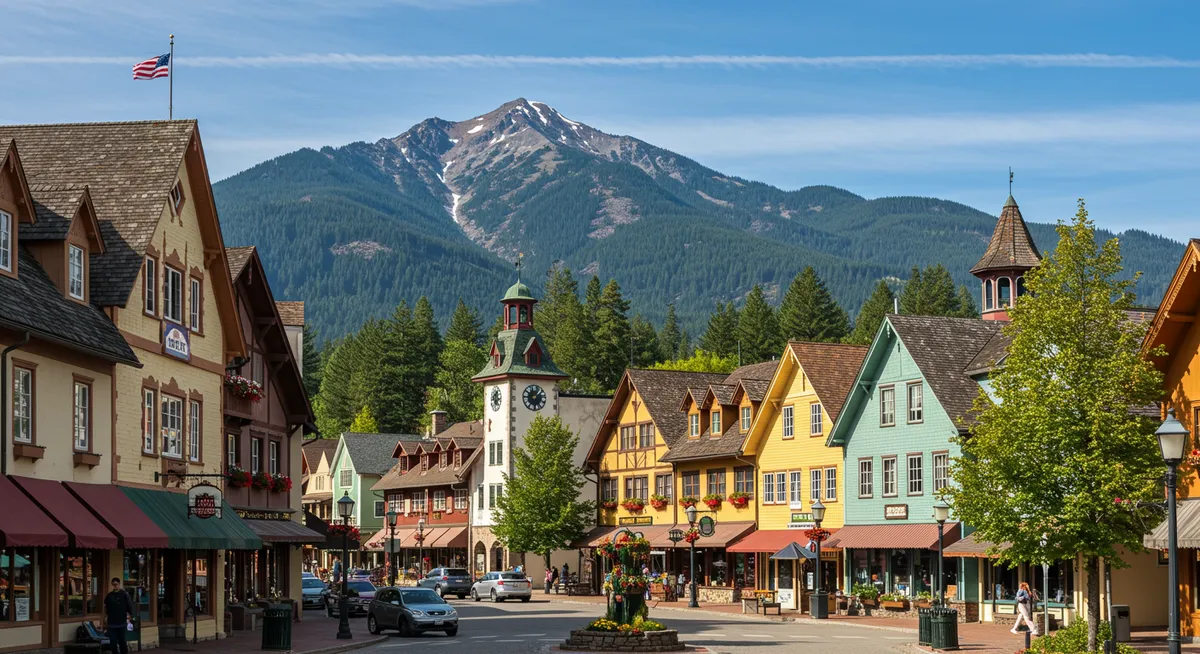
6. McCall, Idaho: Mountain Lake Retreat
Situated on the shores of pristine Payette Lake and surrounded by the mountains of central Idaho, McCall combines small-town charm with world-class outdoor recreation. Originally a logging community, this mountain town has evolved into a year-round destination that manages to maintain its authentic character despite growing popularity. With over 500 inches of annual snowfall, vast wilderness areas, and crystal-clear alpine lakes, McCall embodies the rugged spirit and natural beauty that define the inland Pacific Northwest.
What Makes It Special
- Payette Lake: 5,330-acre glacier-carved lake with pristine blue waters
- Winter Carnival: Annual snow sculpture competition featuring massive, intricately carved creations
- Ponderosa State Park: 1,000-acre peninsula jutting into Payette Lake with old-growth forests
- Hot Springs: Natural thermal springs scattered throughout the surrounding mountains
Local Experiences
Attend the Winter Carnival (late January/early February) to witness amazing snow sculptures and enjoy small-town winter festivities. Ski or snowboard at Brundage Mountain Resort, known for its uncrowded slopes and abundant powder. Hike in Ponderosa State Park for views across Payette Lake and opportunities to spot wildlife including deer, eagles, and osprey. Soak in natural hot springs, with options ranging from developed pools at Burgdorf Hot Springs to undeveloped backcountry springs accessible by trail.
Getting There
McCall is located in central Idaho, about 100 miles (161 km) north of Boise. It's accessible by car via State Highway 55, known as the Payette River Scenic Byway, which follows the river through a spectacular mountain valley.
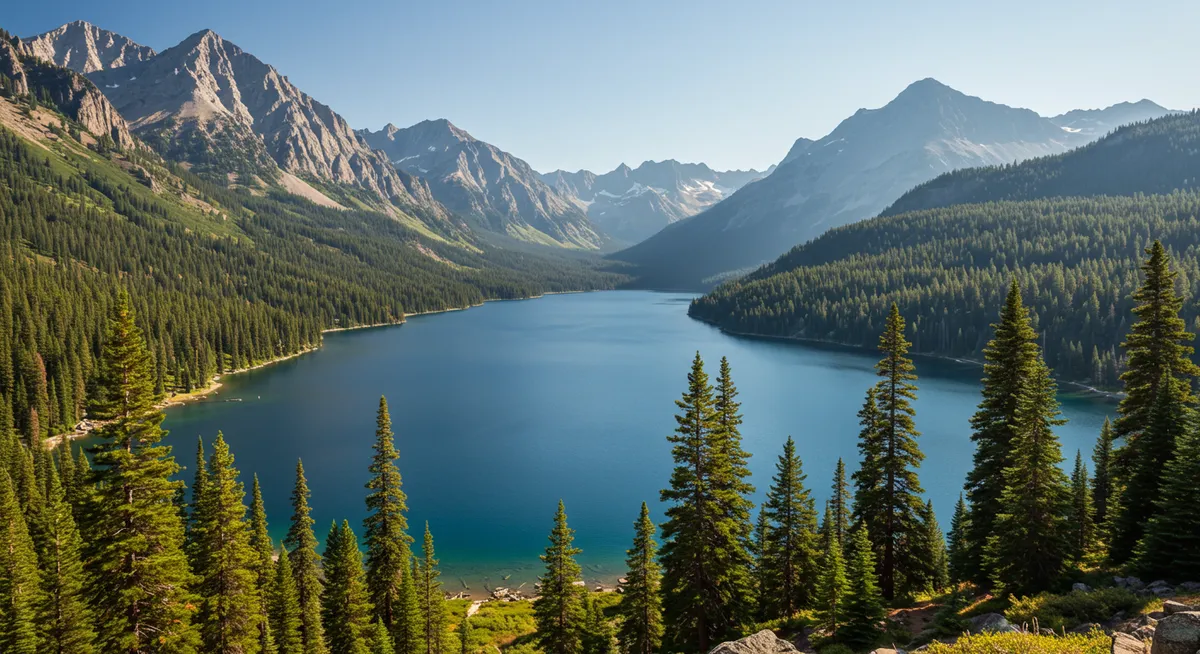
7. Hood River, Oregon: Wind and Water Paradise
Set at the confluence of the Columbia River and Hood River in the heart of the Columbia River Gorge, Hood River has transformed from a quiet orchard town to a world-renowned destination for wind sports. Its consistent strong winds and current create perfect conditions for windsurfing and kiteboarding, while the surrounding mountains, rivers, and forests provide endless opportunities for outdoor adventure. Despite its growing popularity, Hood River maintains a laid-back atmosphere with a vibrant downtown of historic buildings housing independent businesses, breweries, and farm-to-table restaurants.
What Makes It Special
- Windsurfing Capital: World-class wind and water conditions drawing athletes from around the globe
- Fruit Loop: 35-mile scenic drive through orchards, vineyards, and farms
- Mt. Hood Backdrop: Oregon's highest peak creating a dramatic backdrop across the river
- Craft Beverage Scene: Thriving community of breweries, cideries, and wineries
Local Experiences
Watch windsurfers and kiteboarders from the Hood River Waterfront Park, or take lessons to try these exciting sports yourself. Drive the Fruit Loop, stopping at farm stands and orchards to sample local cherries, apples, pears, and berries (best from June through October). Sample craft beverages at one of the town's many breweries, wineries, or cideries, often featuring outdoor patios with views of the Columbia River or Mt. Hood. Hike in the Columbia River Gorge National Scenic Area, with dozens of trails leading to spectacular waterfalls and viewpoints.
Getting There
Hood River is located in northern Oregon, about 60 miles (97 km) east of Portland. It's accessible by car via Interstate 84, which follows the Columbia River through the scenic gorge. The compact downtown is easily explored on foot.
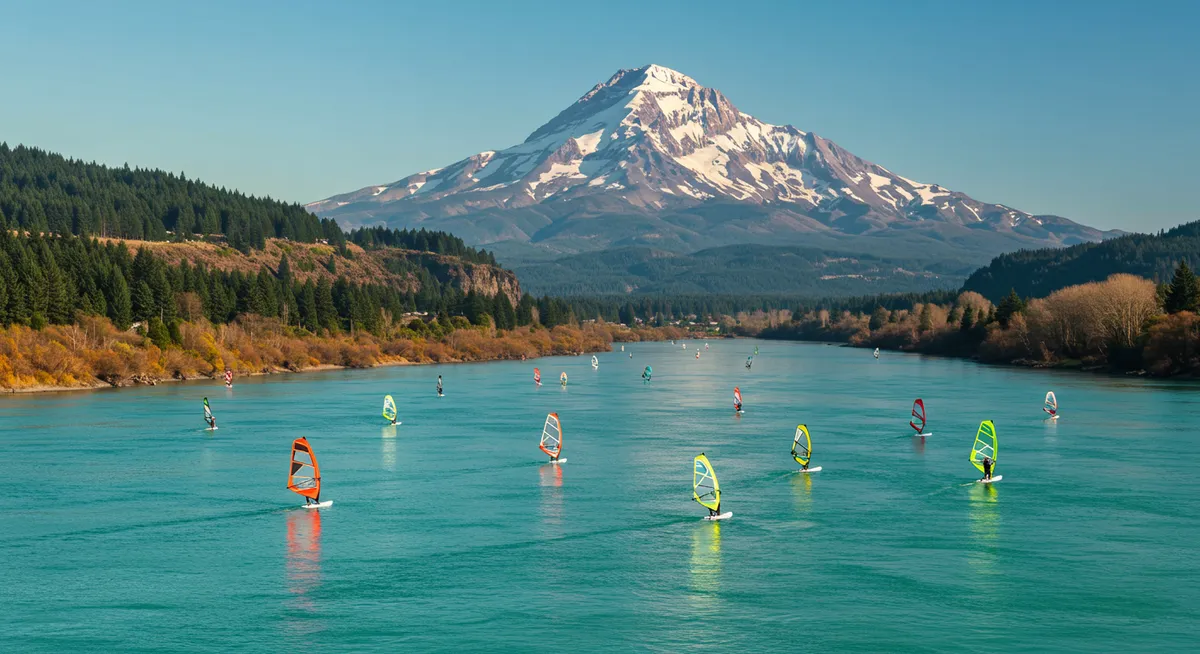
8. Wallace, Idaho: Silver Mining Legacy
Tucked into a narrow valley in Idaho's northern panhandle, Wallace proudly proclaims itself "The Center of the Universe" and the "Silver Capital of the World." This historic mining town, where every downtown building is on the National Register of Historic Places, embodies the rebellious spirit of the American West. Its colorful past includes mining booms, labor struggles, and notable resistance to federal highway construction. Today, Wallace offers visitors an authentic glimpse into America's mining heritage while serving as a gateway to the spectacular recreational opportunities of northern Idaho.
What Makes It Special
- Historic Downtown: Every building in the downtown district is on the National Register of Historic Places
- Silver Mining History: Once produced more silver than any other mining district in the United States
- Hiawatha Trail: Access to one of America's most scenic rail-trails across the Idaho-Montana border
- Quirky Character: Self-proclaimed "Center of the Universe" with manhole cover marking the exact spot
Local Experiences
Tour a real silver mine at the Sierra Silver Mine Tour, led by retired miners who share firsthand accounts of working underground. Visit the Wallace District Mining Museum to learn about the area's rich mining history and the devastating 1910 wildfire that nearly destroyed the town. Bike the Route of the Hiawatha, a 15-mile rail-trail featuring 10 tunnels and 7 high trestles through spectacular mountain scenery. Stay in a historic hotel dating to the mining boom era, many with preserved Victorian details and stories of colorful past guests.
Getting There
Wallace is located in northern Idaho, about 80 miles (129 km) east of Spokane, Washington. It's accessible by car via Interstate 90, which passes directly through the town. The compact historic downtown is easily explored on foot.

Travel Tips for Visiting Pacific Northwest Hidden Gems
To make the most of your experience exploring these enchanting destinations, consider these practical recommendations:
Best Time to Visit
Summer (July-September) offers the most reliable weather with warm, dry days and spectacular wildflower displays in mountain areas. Fall (late September-October) brings vibrant foliage, harvest festivals, and fewer crowds, though with increased chance of rain. Spring (April-June) features lush landscapes and rushing waterfalls, but can be quite rainy, especially west of the Cascades. Winter visits (November-March) provide opportunities for snow sports and cozy experiences, though some mountain passes may be closed and coastal areas experience frequent storms.
Transportation
A car is essential for exploring most Pacific Northwest hidden gems, as public transportation is limited outside major urban areas. Many towns are accessible via scenic byways that are destinations in themselves, so allow extra time for stops at viewpoints and attractions. Be prepared for mountain driving conditions, including steep grades, narrow roads, and possible snow at higher elevations outside summer months. Consider renting an all-wheel-drive vehicle if visiting in winter or planning to explore unpaved forest roads.
Accommodations
Book accommodations well in advance for summer visits, especially for July and August when demand is highest. Many towns offer historic hotels, bed and breakfasts in Victorian homes, and vacation rentals that provide more authentic experiences than chain hotels. Consider staying midweek if possible, as weekend occupancy rates and prices are typically much higher, especially during summer and special events.
Outdoor Etiquette
Follow Leave No Trace principles when exploring natural areas, packing out all trash and staying on designated trails. Be prepared for rapidly changing weather conditions, even in summer, by bringing layers and rain gear when hiking. Research permit requirements for popular wilderness areas, as many require advance reservations during peak season. Respect private property, especially around agricultural areas like orchards and vineyards.
Pro Tip: Pacific Northwest weather can be unpredictable, particularly west of the Cascade Mountains. Embrace the possibility of rain by packing appropriate gear and having indoor backup options for outdoor activities. Locals rarely let precipitation dampen their plans—there's a reason the region is so lushly beautiful!
Planning Your Pacific Northwest Hidden Gem Itinerary
These eight towns represent just a sampling of the Pacific Northwest's hidden treasures. Consider exploring them as part of these regional itineraries:
- Olympic Peninsula Circuit: Combine Port Townsend and Sequim with other coastal communities for an exploration of Washington's diverse Olympic Peninsula
- Columbia River Journey: Link Hood River and Astoria with stops along the Columbia River Gorge for a route following the historic waterway from mountain to sea
- Mountain Towns Tour: Connect McCall, Wallace, and Joseph for an adventure through the spectacular mountain landscapes of Idaho and Eastern Oregon
- Cascade Range Experience: Pair Leavenworth with other mountain communities for a journey through the diverse environments of Washington's Cascade Mountains
For those looking to expand their hidden gem exploration beyond the Pacific Northwest, our guides to hidden gem towns in the American Midwest and hidden gem towns in the American South offer perfect complements to your American travel adventures.
Ready to explore more hidden gem towns?
Continue your journey of discovering enchanting off-the-beaten-path destinations around the world.
Related Hidden Gem Towns
If you enjoy discovering charming small towns in the Pacific Northwest, you might also appreciate these similar destinations in other regions:

Hidden Gem Towns in the American South
Discover enchanting small towns across the American South that offer authentic experiences, historic architecture, and rich cultural traditions.
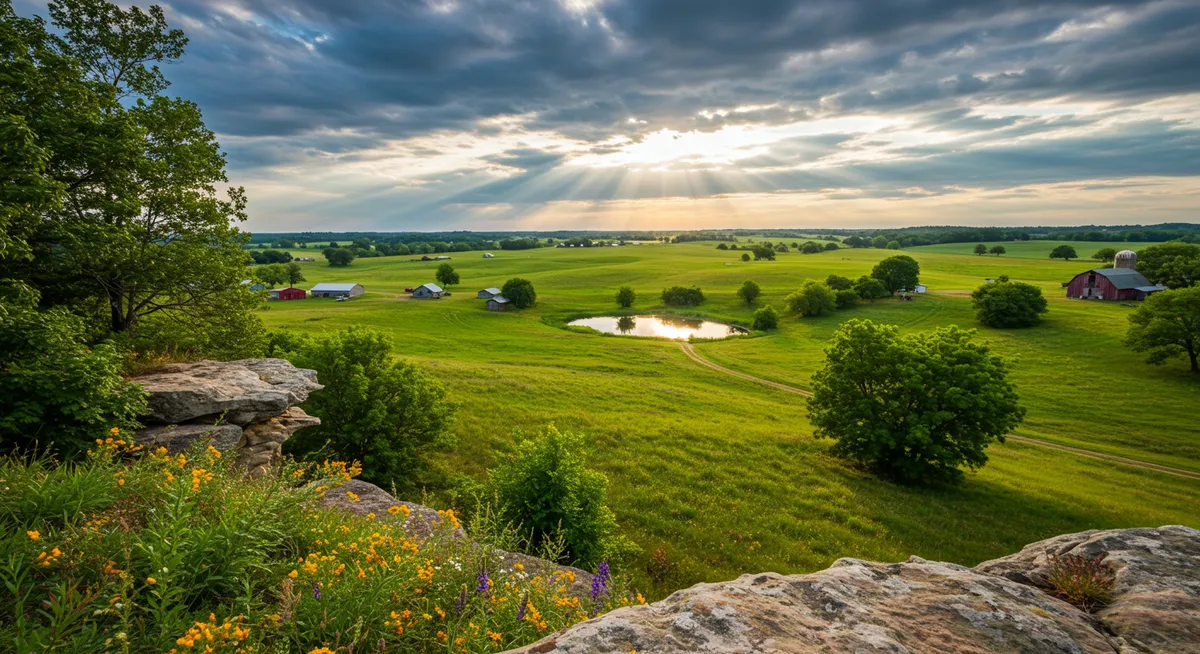
Hidden Gem Small Towns in the American Midwest
Discover charming, under-the-radar small towns across the American Midwest that offer authentic experiences and heartland hospitality.

Lesser-Known Villages in the Swiss Alps
Discover enchanting Alpine villages in Switzerland that offer authentic experiences, breathtaking mountain scenery, and rich cultural traditions.
Explore More Hidden Gem Towns
Discover more enchanting under-the-radar destinations across America and beyond.